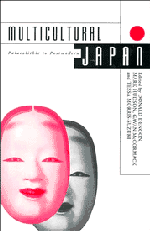Book contents
- Frontmatter
- Contents
- List of Figures and Tables
- List of Contributors
- Abbreviations
- Introduction
- Part 1 Archaeology and Identity
- 1 The Japanese as an Asia-Pacific Population
- 2 North Kyushu Creole: a language-contact model for the origins of Japanese
- 3 Beyond Ethnicity and Emergence in Japanese Archaeology
- 4 Archaeology and Japanese Identity
- Part 2 Centre and Periphery
- Part 3 Contact with the Outside
- Part 4 The Japanese Family
- Part 5 Culture and Ideology
- Afterword: Diversity and Identity in the Twenty-First Century
- Index
3 - Beyond Ethnicity and Emergence in Japanese Archaeology
Published online by Cambridge University Press: 05 November 2011
- Frontmatter
- Contents
- List of Figures and Tables
- List of Contributors
- Abbreviations
- Introduction
- Part 1 Archaeology and Identity
- 1 The Japanese as an Asia-Pacific Population
- 2 North Kyushu Creole: a language-contact model for the origins of Japanese
- 3 Beyond Ethnicity and Emergence in Japanese Archaeology
- 4 Archaeology and Japanese Identity
- Part 2 Centre and Periphery
- Part 3 Contact with the Outside
- Part 4 The Japanese Family
- Part 5 Culture and Ideology
- Afterword: Diversity and Identity in the Twenty-First Century
- Index
Summary
Introduction
Archaeologists have worked for over a century to document the diversity in the material remains of past human activity in the Japanese archipelago. First and foremost has been the classification of archaeological material into a series of ‘types’, recurrent associations which comprise archaeological ‘cultures’. It is now accepted that there were many Palaeolithic, Jōmon, Yayoi and Kofun period cultures. What is less widely agreed is how to interpret this multiplicity. One way has been to regard them as ethnic groups with a shared sense of identity, but this approach is extremely problematic. Incorporating this diversity into general accounts of Japanese archaeology has also caused problems, as archaeologists search for ways to make their esoteric subject matter more comprehensible to the public. As Clare Fawcett suggests in chapter 4, archaeologists often fall back on simplification, stereotypes and familiar images in dealing with the public, leaving their presentations open to political manipulation.
The Wa, Kumaso, Hayato and Emishi are all ethnic groups mentioned in historical sources on early Japan. Unfortunately, these accounts are sparse and mostly written by outsiders. Many scholars have attempted to relate these groups to contemporary Japanese populations. Physical anthropologists and historical linguists have grouped past populations into physical types and language groups. Archaeology has produced accounts of the material remains in terms of repeated sets of associated material culture. The interface between the study of ancient material culture and the study of ethnic groups and ‘ethnogenesis’, however, remains problematic.
- Type
- Chapter
- Information
- Multicultural JapanPalaeolithic to Postmodern, pp. 46 - 59Publisher: Cambridge University PressPrint publication year: 1996
- 4
- Cited by



